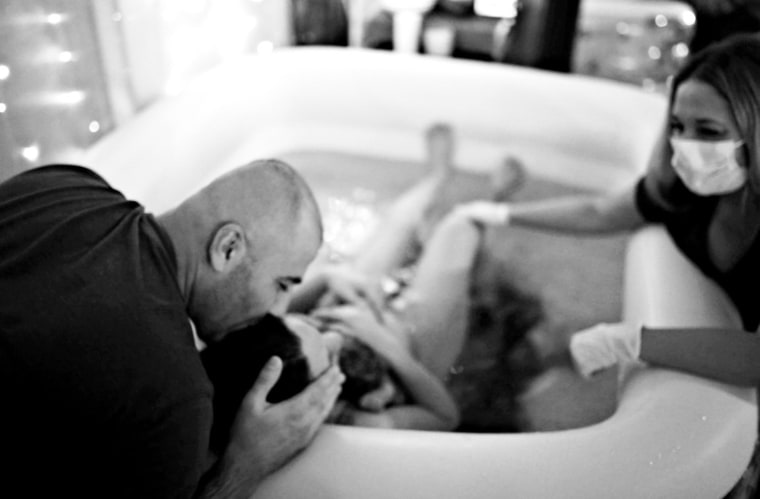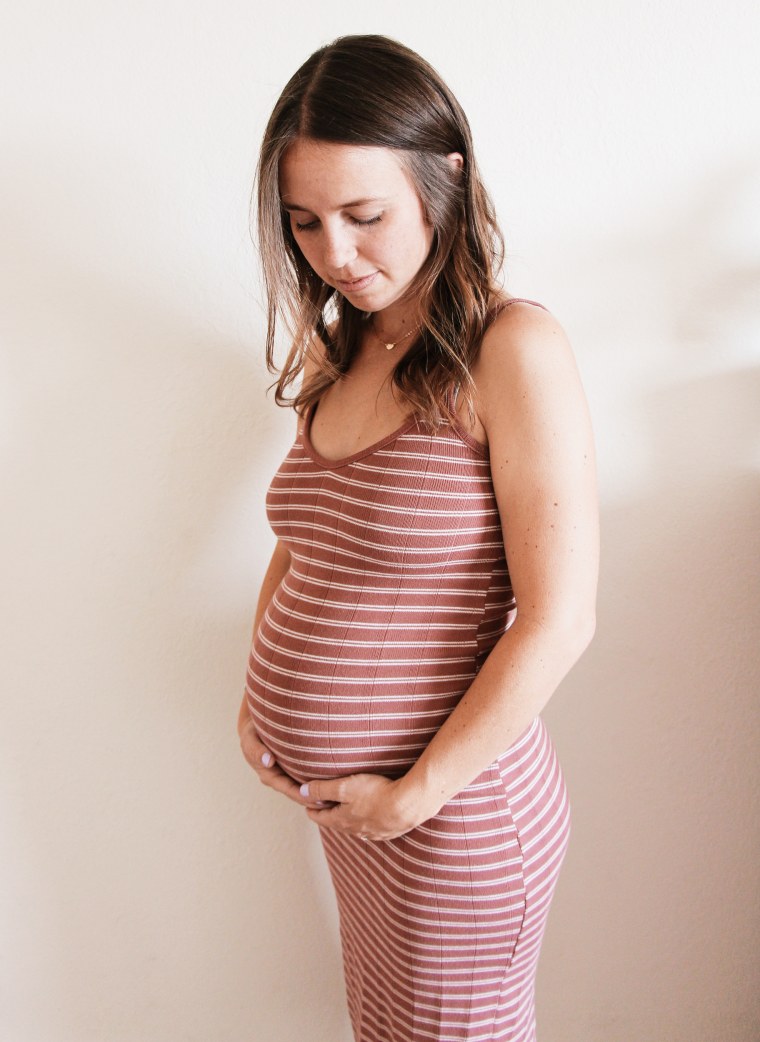Kelsey Nixon had expected her fourth child to be born via hospital induction on March 28. But then COVID-19 started spreading in the U.S. and hospitals began tightening restrictions on who could enter labor and delivery wards. Suddenly, Nixon, who has a gestational surrogate, wasn’t sure if she and her husband could witness the birth of their daughter. They didn’t even know if their surrogate's husband could support her. That’s when they considered a home birth.
“It seemed to bring more and more complications,” Nixon, 35, of Boise, Idaho, said of pursuing a birth at the hospital.

Nixon had delivered two babies in a hospital and had a third baby via gestational surrogate, also in a hospital. Their surrogate, Megan Blackhurst, 26, on the other hand, delivered her three children at home, but had agreed to a hospital birth for Nixon and her husband.
“Never in a million years did we think we would jump into a home birth,” Nixon said.
They researched home births to understand what they needed to know about it and felt comfortable. Blackhurst is healthy, young and low-risk, a good candidate for a successful home birth, Nixon explained.
“We didn’t come to this decision lightly,” she said. “We came to this stage given our very particular set of pregnancy circumstances. While this is not an ideal circumstance, we are in the best-case situation for home birth."
Nixon isn’t alone. As more hospitals restrict visitors to slow the spread of COVID-19, more moms-to-be who expected to deliver in hospitals are thinking about home births.
“It’s making women really question wanting to be in a hospital setting,” Lindsey Meehleis, a midwife at Orange County Midwifery, in California, told TODAY. “We don’t even know how to navigate this because (the increased interest) is just so overwhelming.”
Home births in the time of the COVID-19 pandemic
While Meehleis, is accepting new patients, home births are only recommended for women who are low-risk, which includes:
- Women without pre-existing conditions, such as Type 1 diabetes or hypertension
- Women with previous uncomplicated births
- Women having a single birth
- Women without pregnancy-related conditions, such as preeclampsia and gestational diabetes

Midwives also look for a certain temperament.
“Part of the screening, if you will, is: Are you really comfortable with the idea that there isn't an epidural available? Are you really comfortable with the idea that you're going to do this work,” Jennie Joseph, a midwife at Commonsense Childbirth, in Orlando, Florida, told TODAY.
Right now, Joseph is focused on providing telehealth care for her 170 current patients and isn’t actively seeking new ones. New and ever-changing restrictions mean that her patients might be alone in the hospital or birth center as they deliver and she’s encouraging them to plan for support through video technology.
“I'm just really practical with my advice, take a couple of battery packs that are already charged,” she explained.
She wants her patients to prepare for the possibility of delivering alone instead of panicking.
“This is a distinct possibility. Let’s get with the program here and think ahead,” she said.
Another thing to consider for home birth? Cost. Meehleis says a home birth has a price tag anywhere $3,000 to $9,000, depending on the state, and most insurances don't cover it.
"The money stress is definitely a barrier," she said.
'Only my decision.'
Kaila Kliman’s second baby is due in June. When she had her daughter, Heidi, two years ago, she delivered in a hospital with a midwife. She labored in a pool and then delivered in a bed. She felt cared for and supported by her midwife. So she opted for that same midwife and hospital experience again.
Then her hospital changed their visitation policy due to the COVID-19 pandemic.
“I would never want to do this alone without my husband or my doula,” Kliman, 30, of Dana Point, California, told TODAY. “That started to definitely change things.”

Kliman, who was training to become a doula prior to the outbreak, did not have an epidural during her first delivery and had not planned on one this time. A home birth felt like a natural transition in some ways. Kliman reached out to Meehleis and booked the midwife’s last opening for June.
Both Kliman and Nixon stress that their choices aren’t right for everyone.
“My decision to home birth is only my decision. There is a great fit for everybody. For the first birth, it was in the hospital for me,” she said. “This one, unfortunately is not.”
Sasha Drexler’s second baby is due May 12. As a dentist, she heard a lot about how COVID-19 caused shortages of personal protective equipment, which meant that obstetricians and gynecologists didn’t have enough masks. She started to consider switching to a home birth.
“Doctors just want to help people and yet they’re exposed on a daily basis, potentially, to this virus,” the 31-year-old from Norwalk, Connecticut told TODAY.
While she “absolutely never” wanted a home birth, she researched them and talked with her OB-GYN. As of today, she is sticking to her original plan to deliver in a hospital. If there was a complication and she needed to be transferred, she's worried that she would be treated in an emergency department, where she suspects most patients with COVID-19 would seek care, too.

“Needing to pass through an overburdened emergency room that doesn’t have the equipment it needs,” she explained, “Ultimately, I thought it would be better to be in the hospital.”

